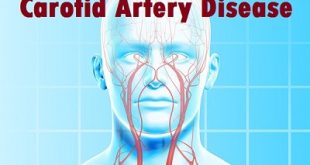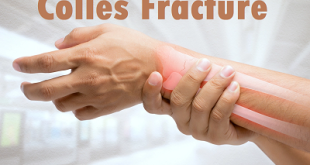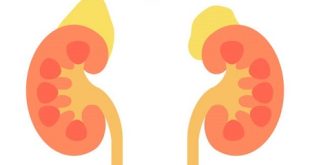What is common cold?
The common cold is a viral infection of your nose and throat (upper respiratory tract). It’s usually harmless, although it might not feel that way. Many types of viruses can cause a common cold.
Children younger than 6 are at greatest risk of colds, but healthy adults can also expect to have two or three colds annually.
Most people recover from a common cold in a week or 10 days. Symptoms might last longer in people who smoke. If symptoms don’t improve, see your doctor.
Viral transmission
Rhinovirus possesses various transmission modes and can infect a huge population at any given time. Most commonly, they are transmitted to susceptible individuals through direct contact or via aerosol particles. The primary site of inoculation is the nasal mucosa, though the conjunctiva may be involved to a lesser extent. The virus attaches to respiratory epithelium and spreads locally. Rhinovirus species A and B bind to the major human rhinovirus receptor, ICAM-1 (found in high quantities in the posterior nasopharynx). Rhinovirus C (RV-C) binds to cadherin-related family member 3 receptor (CHDR-3). Viral particles are usually transmitted via inoculation into the eye or the nose from contact with the fingers that harbor the virus, especially since rhinoviruses are capable of surviving on hands for hours.
Highly contagious behavior includes nose blowing, sneezing, and physically transferring infected secretions onto environmental surfaces or paper tissue. Contrary to popular belief, behaviors such as kissing, talking, coughing, or even drooling do not contribute substantially to the spread of disease.
Parthenogenesis of common cold
The attachment of the virus to its receptors (ICAM-1, CHDR-3, low-density lipoprotein receptor [LDLR]) in susceptible individuals elicits an innate immune response leading to airway inflammation and remodeling.
Few cells are actually infected by rhinovirus, and the infection involves only a small portion of the epithelium. Symptoms develop 1-2 days after viral infection, peaking 2-4 days after inoculation, though reports have described symptoms as early as 2 hours after inoculation with primary symptoms 8-16 hours later. Viremia is uncommon.
A local inflammatory response to rhinovirus in the respiratory tract can lead to nasal discharge, nasal congestion, sneezing, and throat irritation. The nasal epithelium is not damaged. Various polymorphisms in cytokine genes have been shown to impact the severity of infection, suggesting a genetic predisposition. Detectable histopathology causing the associated nasal obstruction, rhinorrhea, and sneezing is lacking, which leads to the hypothesis that the host immune response plays a major role in the parthenogenesis.
Infected cells release interleukin (IL)–8, which is a potent chemoattractant for polymorphonuclear (PMN) leukocytes. Concentrations of IL-8 in secretions correlate proportionally with the severity of common cold symptoms. Inflammatory mediators, such as kinins and prostaglandins, may cause vasodilatation, increased vascular permeability, and exocrine gland secretion. These, together with local parasympathetic nerve-ending stimulation, lead to cold symptoms.
Deficient production of interferon beta by asthmatic bronchial epithelial cells has been proposed as a mechanism for increased susceptibility to rhinovirus infections in individuals with asthma.
What causes the common cold?
A cold is caused by any one of several viruses that causes inflammation of the membranes that line the nose and throat. It can result from any one of more than 200 different viruses. But, the rhinoviruses causes most colds.
The common cold is very easily spread to others. It’s often spread through airborne droplets that are coughed or sneezed into the air by the sick person. The droplets are then inhaled by another person. Colds can also be spread when a sick person touches you or a surface (like a doorknob) that you then touch.
Contrary to popular belief, cold weather or being chilled doesn’t cause a cold. However, more colds do occur during the cold season (early fall to late winter). This is probably due to a variety of factors, including:
- Schools are in session, increasing the risk for exposure to the virus
- People stay more indoors and are in closer proximity to each other
- Low humidity, causing dry nasal passages which are more susceptible to cold viruses
Risk factors for the common cold
Certain conditions increase your risk for catching a cold. These include:
- Time of year: Colds can occur any time of year, but they’re more common in the fall and winter.
- Age: Children under age 6 are more likely to develop colds. Their risk is even higher if they are in day care or a child care setting with other kids.
- Environment: If you’re around a lot of people, such as on a plane or at a concert, you’re more likely to encounter rhinoviruses.
- Compromised immune system: If you have a chronic illness or have been sick recently, you may be more likely to pick up a cold virus.
- Smoking: People who smoke have an increased risk for catching a cold. Their colds also tend to be more severe when they have them.
Symptoms of common cold
When a person has a cold virus, their immune system tries to fight it off. This causes the symptoms that we recognize as a cold.
Symptoms can vary, but common ones include:
- A sore throat
- A cough
- Sneezing
- A blocked or runny nose
- A headache
Rarer symptoms include:
- Muscle aches
- Shivering
- Pinkeye
- Weakness
- Low appetite
- Fatigue
People with a weakened immune system may develop more severe symptoms or a secondary infection, such as pneumonia. If a person develops more serious symptoms, they should seek medical help.
The symptoms of a cold develop in stages.
Stages of common cold
The sections below provide more detail on each stage of the common cold.
Stage 1
One of the first stages of a cold is usually a sore throat. People might also experience:
- Tiredness
- Fatigue
- A slightly runny or stuffy nose, which produces clear mucus
Symptoms are usually mild during the first stage of a cold, before peaking over the following few days.
Stage 2
Symptoms can increase and worsen during the second stage of a cold. People may experience:
- A runny nose
- Congestion
- Mild aches
- Sneezing
- A sore throat
- Tiredness
- Fatigue
- Cough
This is the peak stage of a cold. It usually occurs within 2–3 daysTrusted Source of experiencing the first cold symptoms. People may also notice mucus from the nose turning white, green, or yellow during this stage.
Stage 3
Within 7–10 daysTrusted Source, people will usually start to recover from a cold. Symptoms begin to ease up, and people will start feeling better. People may also find that they have more energy and are more able to carry out tasks as usual.
Certain symptoms can last slightly longer, for up to 14 daysTrusted Source, though they should keep improving within that time. These longer lasting symptoms may include:
- A runny nose
- A stuffy nose
- Cough
Possible Complications
Colds are the most common trigger of wheezing in children with asthma.
A cold may also lead to:
- Bronchitis
- Ear infection
- Pneumonia
- Sinusitis
How is a common cold diagnosed?
- A doctor’s evaluation
Doctors are usually able to diagnose a cold based on the typical symptoms. A high fever, severe headache, rash, difficulty breathing, or chest pain suggests that the infection is not a simple cold.
Laboratory tests are not usually needed to diagnose a cold. If complications are suspected, doctors may order blood tests and x-rays.
Treatment
There’s no cure for the common cold. Antibiotics are of no use against cold viruses and shouldn’t be used unless there’s a bacterial infection. Treatment is directed at relieving signs and symptoms.
Medications
Over-the-counter medications to treat cold symptoms are widely available. But some of these medications aren’t safe for children. Check with your healthcare provider before giving your child over-the-counter medications. Be careful not to combine medicines that treat multiple symptoms. If you do, you could wind up overdosing (getting too much) of some ingredients, which could cause other health problems, including organ damage.
Medications that relieve cold symptoms include:
- Pain relievers: Acetaminophen (Tylenol®) and NSAIDs such as ibuprofen (Advil®) relieve headaches and fever.
- Decongestants: Drugs like pseudoephedrine (Contac Cold 12 Hour® and Sudafed®) and phenylephrine (Sudafed PE®) are intended to reduce stuffiness.
- Antihistamines: Diphenhydramine (Benadryl®) and other antihistamines stop sneezing and a runny nose.
- Cough suppressants: Medications such as dextromethorphan (Robitussin® and Vicks DayQuil Cough®) and codeine reduce coughing.
- Expectorants: Guaifenesin (Mucinex®) and other expectorants thin and loosen mucus.
Lifestyle and home remedies
To make yourself as comfortable as possible when you have a cold, try:
- Drinking plenty of fluids. Water, juice, clear broth or warm lemon water are good choices. Avoid caffeine and alcohol, which can dehydrate you.
- Eating chicken soup. Chicken soup and other warm fluids can be soothing and can loosen congestion.
- If possible, stay home from work or school if you have a fever or a bad cough or are drowsy after taking medications. This will give you a chance to rest as well as reduce the chances that you’ll infect others.
- Adjusting your room’s temperature and humidity. Keep your room warm, but not overheated. If the air is dry, a cool-mist humidifier or vaporizer can moisten the air and help ease congestion and coughing. Keep the humidifier clean to prevent the growth of bacteria and molds.
- Soothing your throat. A saltwater gargle — 1/4 to 1/2 teaspoon salt dissolved in a 4-ounce to 8-ounce glass of warm water — can temporarily relieve a sore or scratchy throat.
- Using saline nasal drops. To help relieve nasal congestion, try saline nasal drops. You can buy these drops over-the-counter, and they can help relieve symptoms, even in children. In infants, gently suction the nostrils with a bulb syringe (insert the bulb syringe about 1/4 to 1/2 inch, or about 6 to 12 millimeters) after applying saline drops.
Prevention
Because so many different viruses cause colds and because each virus changes slightly over time, an effective vaccine has not yet been developed.
The best preventive measure is practicing good hygiene. Because many cold viruses are spread through contact with the secretions of an infected person, the following measures can help:
- People with cold symptoms and people in their household and workplace should wash their hands frequently.
- Sneezing and coughing should be done into tissues, which should be carefully disposed of.
- When possible, people with symptoms should sleep in a separate room.
- People who are coughing or sneezing because of a cold should not go to work or school where they might infect others.
- Cleaning shared objects and surfaces with a disinfectant can also help reduce the spread of common cold viruses.
Despite their popularity, echinacea and high-dose vitamin C (up to 2,000 milligrams per day) do not prevent colds, nor does eating citrus fruits.
 Diseases Treatments Dictionary This is complete solution to read all diseases treatments Which covers Prevention, Causes, Symptoms, Medical Terms, Drugs, Prescription, Natural Remedies with cures and Treatments. Most of the common diseases were listed in names, split with categories.
Diseases Treatments Dictionary This is complete solution to read all diseases treatments Which covers Prevention, Causes, Symptoms, Medical Terms, Drugs, Prescription, Natural Remedies with cures and Treatments. Most of the common diseases were listed in names, split with categories.








je vous félicite pour les articles simples mais très explicites et clairs. tout est bien dit et en qualité de Medecin depuis plus de 40 ans je reviend très souvent à ces articles pour rafraîchir la mémoire ou survoler une sémiologie pas claire. Merci